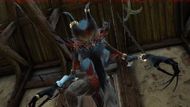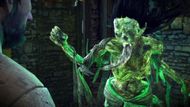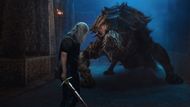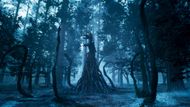The Witcher takes place in a world where magic is dark, the lands are unsafe, and creatures can be terrifying. Most monsters can be seen wandering, while some are both extremely dangerous and seemingly mysterious. Strong curses, ancient magical spirits, or perverse magic research can all give rise to such horrors. Geralt has to fight bloodthirsty vampires, forest spirits, and royalty with a terrible curse, who always present a grave danger to him.
The top 7 monsters of The Witcher are taken from the stories of the books, the television series, and the popular video games. Each of the beasts Geralt must battle has a unique backstory, set of skills, and difficulties. With their abilities to be invisible, place curses, cast strong spells, or roar fearfully, these creatures push him to his limits. We can learn why Geralt's world is so perilous and why it is unfair to eliminate every monster without investigating them. It is possible, as commonly portrayed, that some of them can find a way to survive.
**Disclaimer: This article is solely the writer's opinion. Reader's discretion is advised.**
The Witcher's seven most vicious monsters (ranked) are listed below:
7. Chernobog

Chernobog, the formidable, dragon-like creature, was first seen in Season 2 of the Witcher Netflix series. This creature came to life when a fragment of a mystical monolith in Cintra broke in two. The stellacite mineral on its body is almost impossible to damage, meaning it is very tough. Chernobog uses his sharp claws, teeth, and hefty wings to fly down on enemies.
The weirdest thing about the bird is that its eyes look human-like. It is only for the series because the creature does not appear in the books or games. More potent external threats are alluded to with The World's Edge landing, posing additional difficulties for Geralt and his companions.
6. Katakan

Katakans are terrifying monsters, similar to vampires, in The Witcher world. They seem very large, having highlights like fangs and long blades on their feet. One thing that makes them so scary is the ability to become hidden and disappear. They lurk about and suddenly show up to feed on human blood.
In "The Witcher 3: Wild Hunt," Geralt must battle a Katakan that preys on intoxicated people in the "Contract: The Oxenfurt Drunk" mission. This monster's favorite food was blood combined with booze. Katakans are incredibly strong, quick, and quick to bounce back from injuries during competition.
Geralt fights back by erecting the Yrden sign and throwing Moon Dust bombs to force them to divulge their position. Silver swords soaked in vampire oil are what hurt them the most. They aren’t killed by the sun, but it does weaken the speed of their recovery. They are very dangerous because they can think and act cleverly.
5. Djinn

In the Witcher universe, a Djinn is an air spirit with genie-like powers. They lack a solid form and use extreme magic to bring about their powers. Once captured, a Djinn is bound to the person who captured it and must grant three wishes. However, they don’t share the same feelings and will usually manipulate a person’s wishes for harmful ends.
In The Last Wish, Geralt and Yennefer encounter a Djinn, leading to unforeseen outcomes. Djinns possess storm-making abilities and powerful sorcery, making them challenging to control. It is extremely dangerous for others to attempt to find them; therefore, only magical professionals should do so.
In the game The Witcher 3: Djinns, under the Wild Hunt, they have Elementa as their class and are affected by Dimeritium bombs and Elementa oils. Care should be taken when dealing with a Djinn, as they can attack with immense devastation at any moment. Since they are rare and seldom seen, any sighting of one is significant.
4. Plague Maiden

In the Witcher universe, a Plague Maiden (also called Pesta) is a specter of great horror. She resembles a very sick woman with rotting skin and is frequently seen with rats nearby. The places where these wraiths appear are often places that suffered due to disease and distress. No one knows if rats cause plagues or fall into them, but their appearance always leads to death and sadness.
In the game The Witcher 3, during the "A Towerful of Mice" quest, Geralt comes across a Plague Maiden while fighting the Wild Hunt. Players can defeat her by trapping her with the Yrden sign, using her Specter oil on their sword, and launching Moon Dust bombs to prevent her from going intangible. She can command plague clouds and is a tough opponent. Players must battle her and discover the circumstances that brought her down to bring her peace.
3. Striga

Striga is an extremely dangerous creature seen in The Witcher. She was human once, but her existence as a beast came after a strong curse was cast on her. The daughter of King Foltest, Princess Adda, is the most well-known Striga. A curse followed her throughout her life, and after giving birth and dying, she was buried in a tomb. After seven years, she turned into a Striga, who hated all living things and destroyed them. Strigas are incredibly strong and swift, and their teeth and claws are extremely sharp. They come out most at the time of a full moon and usually make their home in crypts or graveyards.
In Geralt’s story, he has to break the curse that has turned the Striga into a demon woman. He chooses to break the curse by preventing her from reaching her grave before sunrise, rather than murdering her. The show emphasizes Geralt's generosity and the idea that monsters aren't always scary by doing this. Strigas are extremely dangerous, yet they can be saved if you know what to do and have fortitude.
2. Bruxa

One of the strongest varieties of vampires in the world of The Witcher is the bruxa. Her looks are very charming, yet inside, she is something dangerous. Bruxae are considered powerful and intelligent since they are higher vampires. The night is usually more comfortable for them, even though they can walk in the sun. Their strong shriek can knock people over and temporarily blind them, and that is why this creature is so terrifying.
Bruxae are difficult to locate because of their speed and invisibility. They tempt their victims with fake love to feed off them. In The Witcher Season 2, Geralt meets a bruxa named Vereena, who eventually falls in love with a human. Despite being a protégé and a master, both guys are revealed to be like both monsters and human beings. Weapons such as silver, flames, or a wooden stick can be used to defeat a bruxa. A witcher's ability is put to the test when confronted with a bruxae, which are dangerous predators despite their beauty.
1. Ancient Leshen

The Ancient Leshen is an important and powerful spirit of the forests in the world of The Witcher. It has the skull of a deer for a head, with its limbs similar to tree branches. It is famous for being capable of controlling forests and bringing wolves and crows to its side. It might completely disappear into a smoke haze during a fight, making it hard to follow.
The Ancient Leshen happens to use roots to trap and hurt its rivals, and it can also teleport, so it cannot be harmed. Geralt can use Dragon's Dream bombs and Igni magic to win it over. It will be easier to damage them with a silver sword if you apply relict oil.
Since Leshen is immune to Axii, Geralt cannot change how the monster thinks. It is very protective of its area and will fight back if someone intrudes. It is worshipped by some villagers who consider it a guardian. On the other hand, its ways are dangerous, and it does not spare any intruders. It takes preparation and strategy to overcome an Ancient Leshen's formidable skills.
These seven monsters prove just how deep and dangerous the world of The Witcher can be. Each creature stood out due to its characteristics, abilities, and sinister history. Besides fighting, Geralt dealt with real mysteries and decisions about what was right or wrong. All monsters left a lasting impression, even though not all of them were once humans.
All of the monsters gained rich histories from the games, television shows, and books, making them more fascinating than simply being the foes The Witcher faced. Ultimately, these stories showed us that hiding behind the fear is often a sad tale.
